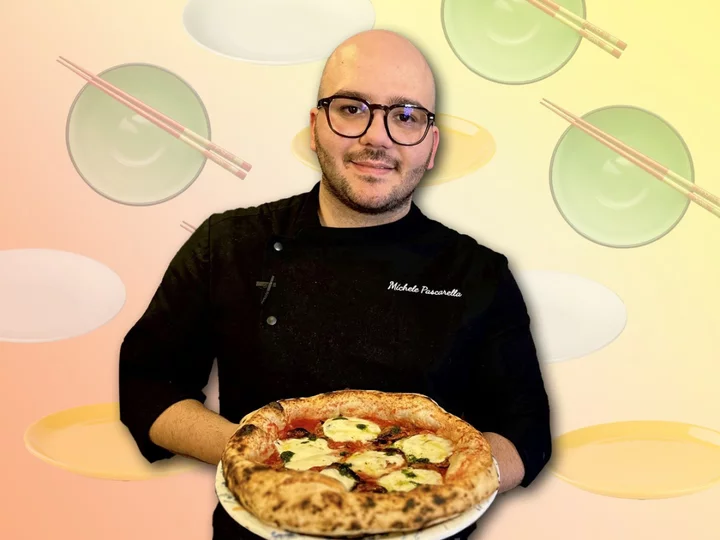
The dish that defines me: Michele Pascarella’s Neapolitan ragu
Defining Dishes is an IndyEats column that explores the significance of food at key moments in our lives. From recipes that have been passed down for generations, to flavours that hold a special place in our hearts, food shapes every part of our lives in ways we might not have ever imagined. I was very young when I started working in a local pizzeria in Caserta, the city near Naples where I grew up. I was 11 years old when I started working there, and stayed on for about eight years before moving to London to start my own business. But during my teenage years, one of the best memories I have is waking up to the smell of my mother’s ragu on Sundays. Neapolitan ragu is a specialty in the region, and we are very proud of it. It’s one of the two most famous varieties of ragu, the other being ragu bolognese, and uses whole chunks of beef and pork rather than ground meat. It must be cooked for a long time over a low heat, for at least eight hours, preferably 10 hours. My mother would get up at 5am to start making hers and it would continue to simmer slowly until the family is ready to eat in the afternoon. Sundays are special because it’s a time for the whole family, including our extended family, to come together and eat at the same table. My family comprised of my parents, my three siblings and myself, and we would usually be joined by my grandparents, aunts, uncles, cousins. We usually had anywhere between 15 to 20 people gathering on Sunday afternoons. It didn’t matter what commitments you had – on Sunday, you have to sit at the table with family. It’s the most important day of the week for us. The ragu is the dish that, for me, brings everything together: passion, love, happiness and strong ties with family. Because I worked late shifts often, I would wake up really late on Sundays, around 11am or 12pm. So by the time I wake up, the beautiful aroma of the ragu that has been cooking since 5am will have filled the whole house. I would wake up so hungry. My breakfast on these days would simply be a hunk of bread, torn and dipped straight into the still-simmering sauce, with some parmigiano reggiano sprinkled on top to help cool it down. Every family has their own way of eating ragu. You can dip bread in it, like I did for breakfast, but it is most commonly eaten with pasta. Some people have it with gnocchi while others might use a short pasta or spaghetti. But it does have to be a robust pasta shape, you can’t have ragu with a really small pasta, or it won’t stand up to the sauce. No one makes ragu like my mother’s. I could go to any restaurant, even those with Michelin stars, and it wouldn’t come anywhere close to hers. I strongly believe her secret ingredient is just her love for cooking for her children, as the dish needs that passion to make it taste so good. I never woke up at 5am to try and make it with her, it was so hard when I was a teenager! But when I did start to learn how to make it, it was very difficult to get up that early. I don’t know how she did it for so many years. In my restaurant, Napoli on the Road, I make a pizza with the slow-cooked ragu as a topping, along with a parmigiano reggiano cream. I call it Ricordi D’infanzia, which translates to “childhood memories” because it holds such strong nostalgia for me. But I still can’t make it like my mother does. When I go home to Caserta to see my family, I do try to wake up at 5am to make it with her. I’m less stressed about work when I’m there so I can usually do it, but when I’m back in London it’s hard to get up at that hour when you finish at midnight at the restaurant. Like most mothers who pass down their recipes, there are no accurate measurements to my mother’s ragu. Sometimes they put some sort of secret ingredient inside and won’t tell you. But I have learnt that you need to be flexible about it, depending on what ingredients are available to you. For example, maybe the tomatoes you buy from the market are too acidic. My mother fixes this by putting a whole potato in the sauce, because its starchiness will help to remove the acidity from the tomatoes. Or, she might add sugar to the sauce to mellow it out. It can be tricky to get it right, so I can only try my best to do better than my mother, but it is hard. I think I will be 80 or 90 years old before I perfect my own version! I’ve lived in London for almost 20 years, but I still miss those Sunday afternoons spent with my family at my uncle’s or grandfather’s house. In London, things are very fast-paced and rushed, you don’t really have time to sit down with people. I try to go back every couple of months, and I really look forward to it. My mother still makes her ragu. Even though nowadays it’s harder to get everyone together, we do our best to keep everyone united. I don’t have any family in London, so it’s important to me to keep that tradition alive when I go home. My dad has never visited me here because he is afraid of flying, but my mother comes fairly often and I’ll make ragu for her when she does. She never says anything bad about it – although, she will tell people: “It’s good… but it can be improved.” Still, I’m glad I have the opportunity to make it for her sometimes and it keeps me connected to home. Michele Pascarella is the chef-owner of Napoli on the Road. Read More The dish that defines me: Evelin Eros’s rum cake The dish that defines me: Mallini Kannan’s baked honey-soy salmon The dish that defines me: Frank Yeung’s prawn wontons
2023-09-12 13:48
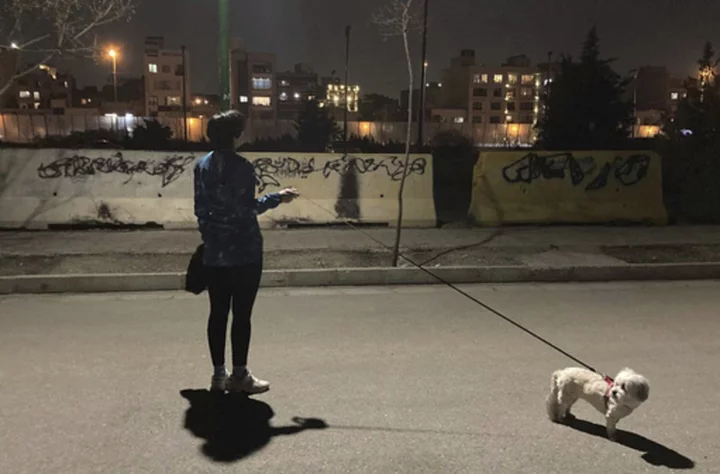
In Iran, snap checkpoints and university purges mark the first anniversary of Mahsa Amini protests
Iran’s theocracy is trying hard to both ignore the upcoming anniversary of nationwide protests over the country’s mandatory headscarf law and tamp down on any possibility of more unrest
2023-09-12 13:29

Atlanta, New Orleans, San Francisco areas gain people after correction of errors
Some U.S. urban areas gained population
2023-09-12 12:55
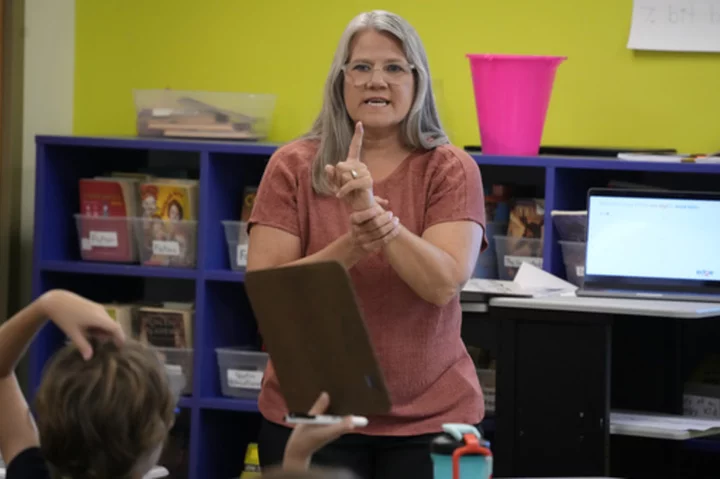
The 'science of reading' swept reforms into classrooms nationwide. What about math?
As American schools work to turn around math scores that plunged during the pandemic, some researchers are pushing for more attention to a set of research-based practices for teaching math
2023-09-12 12:18
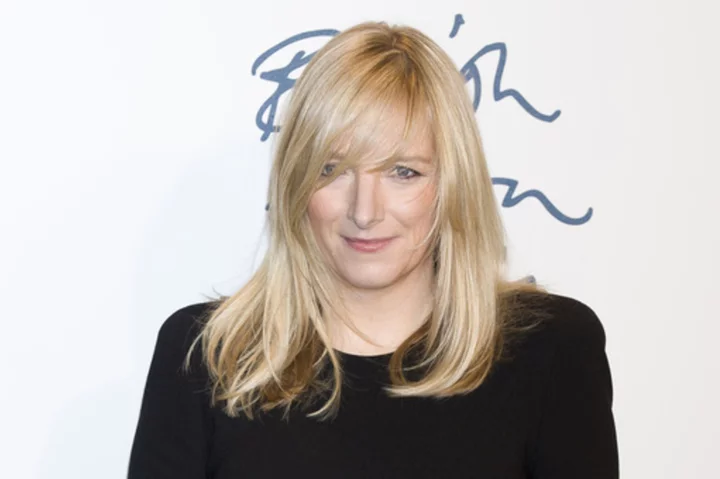
Sarah Burton, who designed Kate's royal wedding dress, to step down from Alexander McQueen
The fashion designer who created the wedding dress of Kate Middleton, Princess of Wales, is stepping down as creative director at Alexander McQueen after two decades at the brand, luxury group Kering said
2023-09-12 08:57
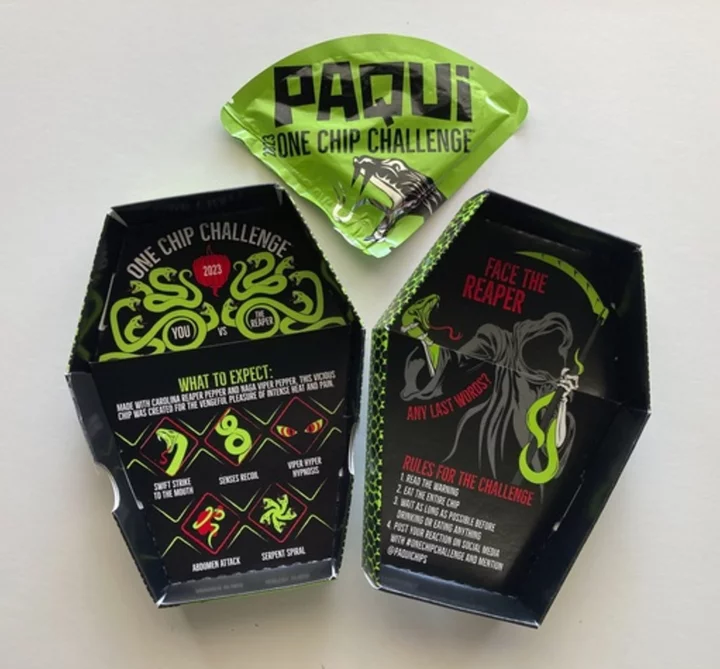
Spicy food challenges have a long history. Have they become too extreme?
A tortilla chip maker’s decision to pull its extremely spicy product sold as a “One Chip Challenge” from store shelves following the death of a Massachusetts teen has renewed attention on the popularity — and risks — of similar dares marketed by brands and spread widely online
2023-09-12 05:15
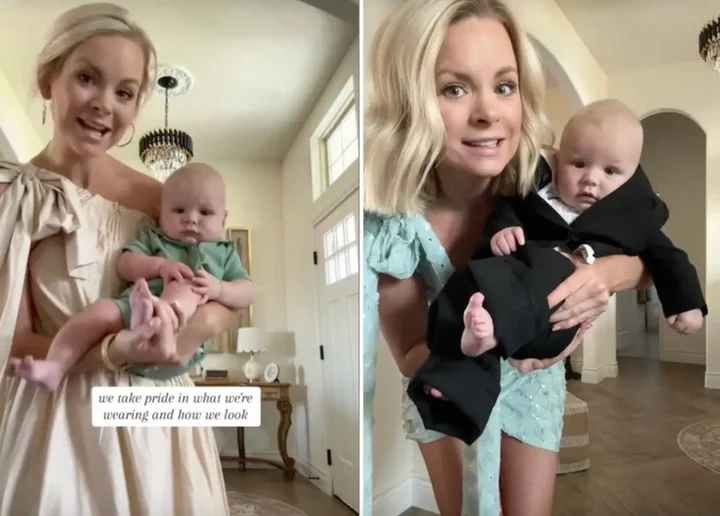
Mom says she was shamed for teaching infant son to take pride in his appearance
A mother has revealed was shamed for dressing her five-month-old son every morning, in order to teach him how to take pride in his appearance. On 27 July, Geordian Abel - a 29-year-old fashion influencer and boutique owner from Fort Worth, Texas - received “brutal” backlash after her TikTok explaining that she dresses her son, Hutton, every day went viral. In the video, Abel was seen in a tan maxi dress adorned with a bow, while her son was dressed in a green polo onesie. She told viewers: “I think it’s important to instill in him from a young age that we get up, we get dressed, we take pride in what we’re wearing and how we look.” She captioned the video: “Teach ‘em young.” In an interview with Insider, the Flourish In Frills owner said that she made the TikTok video after receiving many comments on her “outfit of the day” (OOTD) videos, as viewers questioned why she and her son get “dressed to the nines” every day. The video has since received more than two million views and an onslaught of negative comments on the platform, which Abel later described as “brutal” in a follow-up video. “I too wear a one shoulder cocktail dress on a Monday morning,” one user snarked, while someone else wrote: “The greatest gift you can give him is to teach him not to care what other people think.” @geordianabel Teach em young ? #momlife #babyboy #4monthsold ♬ original sound - Geordian TikToker @bugsbryant added to the discourse when she stitched Abel’s video with her own TikTok, which quickly went viral with 2.3m views. “We are in the same clothes we slept in,” she replied to Abel’s post. “It is currently 3pm, and we will stay in this attire until tomorrow or until I decide to do the mountain of laundry that’s upstairs.” In a follow-up video, Abel told viewers that while she’s decided to take the criticism with a grain of salt, the “mom-shaming’s gotta stop.” She doubled down on dressing her son Hutton every day in a 29 August video, where she shared that the routine could “set him up for success for job interviews” or help counteract depression in the future. @bugsbryant #stitch with @Geordian ♬ original sound - BugsBryant Viewers in the comment section agreed with Abel, writing: “Exactly!!! I hate that people were mom shaming you about this.” Another person commented: “There’s so many benefits to changing out of PJs in the morning.” Speaking to Insider, Abel admitted that she didn’t expect her video “would get such negative reaction,” as she’s “never known any different than getting up and getting dressed.” However, she’s decided to turn the other cheek and has since been posting videos on TikTok that poke fun at the backlash. @geordianabel To each their own, but it's important to us ? #momlife #momsoftiktok #newmom ♬ be Love Is Beautifully Painful (Remix) - Ghost Duet In a video from 25 August, the boutique owner jokingly dressed up her baby boy in a tiny tuxedo, while other videos showed Abel dressed in a fancy gown as she tackled household chores. She hasn’t let the online negativity change the way she gets her son ready for the day, telling Insider that she’s a proponent of dressing with panache and flair. “I am super passionate about look good, feel good,” Abel said. The mom of one added that her positive attitude was instilled by her own mother from a young age. Plus, a boutique owner, she lives and breathes clothes and wouldn’t have it any other way. “I probably love clothes a tad more than the next girl,” she explained. “But even getting up and putting on athleisure, if that’s their jam, does a world of difference.” The Independent has reached out to Geordian Abel for comment. Read More Ruby Franke – update: TikTokers crash virtual court hearing before YouTube influencer held in jail Single woman’s day in a life video met with vitriol after going viral Rihanna and A$AP Rocky’s unusual new baby name has been revealed Schoolboy almost dies from swallowing magnets for TikTok challenge Woman shares honest review of New York City apartment TikTok mom slammed after making 5-year-old son run in 104 degree heat
2023-09-12 04:57

The Reason Why Americans Refer to Autumn as ‘Fall’
The words ‘fall’ and ‘autumn’ appeared around the same time in Great Britain, but only one of the seasonal names is still used there today.
2023-09-12 04:52

Wisconsin wolf hunters face tighter regulations under new permanent rules
Wolf hunters in Wisconsin would have to register kills faster and have less time to train their dogs under new regulations being finalized by state wildlife officials
2023-09-12 03:52

World Sepsis Day: What is the condition and its symptoms?
Sepsis is an illness that affects nearly 50 million people worldwide each year, with around 11 million deaths attributed to the condition. In the United States, at least 1.7 million adults in the US develop sepsis annually, and nearly 270,000 die as a result, the Centres for Disease Control and Prevention (CDC) says. It affects 245,000 people in the UK each year, with around 48,000 deaths, according to the UK Sepsis Trust. World Sepsis Day commemorated on 13th September every year, strives to raise global awareness of the life-threatening condition. The day is seen as “an opportunity for people worldwide to unite in the fight against sepsis,” the Global Sepsis Alliance says. Here is everything you need to know about sepsis: What is sepsis? Sepsis Research says when the condition strikes, the immune system “overreacts” and begins to attack the infection and everything else around it “including the body’s own tissues and organs.” “Any type of infection — bacterial, viral or fungal — can lead to sepsis,” it adds. When sepsis occurs, it can cause inflammation and cause blood clotting around the body, if it does not get treated, it can result in death, organ failure and tissue damage, CDC says. Sepsis cannot be caught from another person, the NHS explains. What are the symptoms? The World Health Organisation (WHO) explains that the condition is a “medical emergency,” so if you think a person is exhibiting signs of sepsis or if you are showing signs – make sure you call 999 or go to the emergency room immediately. According to WHO, common signs and symptoms include: • Fever or low temperature and shivering • Confusion • Difficulty breathing • Clammy or sweaty skin • Extreme body pain or discomfort • High heart rate, weak pulse or low blood pressure • Low urine output Symptoms in children include: • Fast breathing • Convulsions • Pale skin • Lethargy • Difficulty waking up • Feeling cold to touch What are the causes? The Mayo Clinic says any type of infection can lead to sepsis and those that more commonly cause the condition include infections of: • Lungs, such as pneumonia • Kidney, bladder and other parts of the urinary system • Digestive system • Bloodstream • Catheter sites • Wounds or burns “Sepsis often presents as the clinical deterioration of common and preventable infections such as those of the respiratory, gastrointestinal and urinary tract, or of wounds and skin. Sepsis is frequently under-diagnosed at an early stage - when it still is potentially reversible,” the Global Sepsis Alliance says. Who is most at risk? The people most at risk of the condition, according to Mayo Clinic, are: • People with lower immune response, such as those being treated for cancer • People with human immunodeficiency virus (HIV). • People with chronic diseases such as diabetes kidney disease or chronic obstructive pulmonary disease (COPD). • people who are in intensive care or longer hospital stays. • People over the age of 65 • Infants How many cases are there globally? The WHO says a scientific publication estimated that in 2017 there were 48.9 million cases and 11 million sepsis-related deaths worldwide, which accounted for almost 20 per cent of all global deaths. That same year, almost half of all global sepsis cases occurred among children with an estimated 20 million cases and 2.9 million global deaths in children under 5 years of age. How can it be prevented? The Global Sepsis Alliance says the best to to avoid sepsis is by preventing infection. This can be done by undergoing vaccinations, ensuring that you only come into contact with clean water, washing your hands properly and if you are giving birth - making sure it is in a clean and sterilised environment. Can sepsis be treated? Sepsis can be treated with appropriate treatment such as antibiotics – this should be given as soon as possible. The CDC says sometimes “surgery is required to remove tissue damaged by the infection”. “Antibiotics are critical tools for treating life-threatening infections, like those that can lead to sepsis,” the CDC adds. Read More 5 things everyone needs to know about eczema 13 potential cancer symptoms you should get checked out How can I improve my teenager’s low mood? Duran Duran’s Andy Taylor says he’s ‘asymptomatic’ after end-of-life diagnosis Nine hours of parallel surgery: how Britain’s first womb transplant was carried out Bursts of activity that make you huff and puff ‘linked to reduced cancer risk’
2023-09-12 03:19
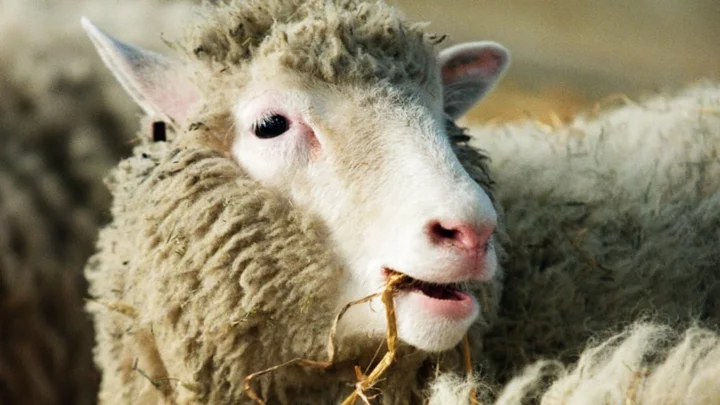
Dollymania: When Dolly the Sheep Created a ’90s Media Sensation
Dolly the sheep was the first animal cloned from a single adult cell—and raised a lot of questions about the future of human cloning.
2023-09-12 02:26

Sarah Burton to leave Alexander McQueen after 13 years as creative director
Sarah Burton is set to leave Alexander McQueen after serving as creative director for 13 years, the brand has announced. Burton, 49, was appointed to the role in 2010 following the death of Lee Alexander McQueen, having worked alongside the designer for 14 years. She was responsible for the creation of the wedding dress worn by the Princess of Wales, when she married Prince William in 2011. “I am so proud of everything I’ve done and of my incredible team at Alexander McQueen,” Burton said in a statement. “They are my family, and this has been my home for the past 26 years. I want to thank Francois-Henri Pinault for believing in me and offering me this amazing opportunity.” The label’s spring/summer 2024 collection, due to be unveiled at Paris Fashion Week later this month, will be her last. “Above all, I want to thank Lee Alexander McQueen,” Burton continued. “He taught me so much and I am eternally grateful to him. “I am looking forward to the future and my next chapter, and will always carry this treasured time with me.” François-Henri Pinault, chairman and CEO of parent company Kering, said: “I am immensely grateful to Sarah, and I want to personally thank her for her work over the past two decades, first alongside Lee Alexander McQueen, where her role was instrumental to his success, and then as the Creative Director since 2010. “Through her own experience, sensitivity and talent, Sarah continued to evolve the artistic expression of this iconic house. She kept and continued Lee’s heritage, attention to detail and unique vision, while adding her own personal, highly creative touch.” Gianfilippo Testa, CEO of Alexander McQueen, added: “We would like to express our immense gratitude to Sarah for writing such an important chapter in the history of the Alexander McQueen House. “Sarah’s contribution over the past 26 years will leave an indelible mark.” A new creative organisation will be announced in due course, the brand have said. Read More Charity boss speaks out over ‘traumatic’ encounter with royal aide Ukraine war’s heaviest fight rages in east - follow live Sarah Burton to leave Alexander McQueen after 13 years as creative director What happens at a sexual health check-up? 9 arthritis myths we all need to stop believing
2023-09-12 01:21
